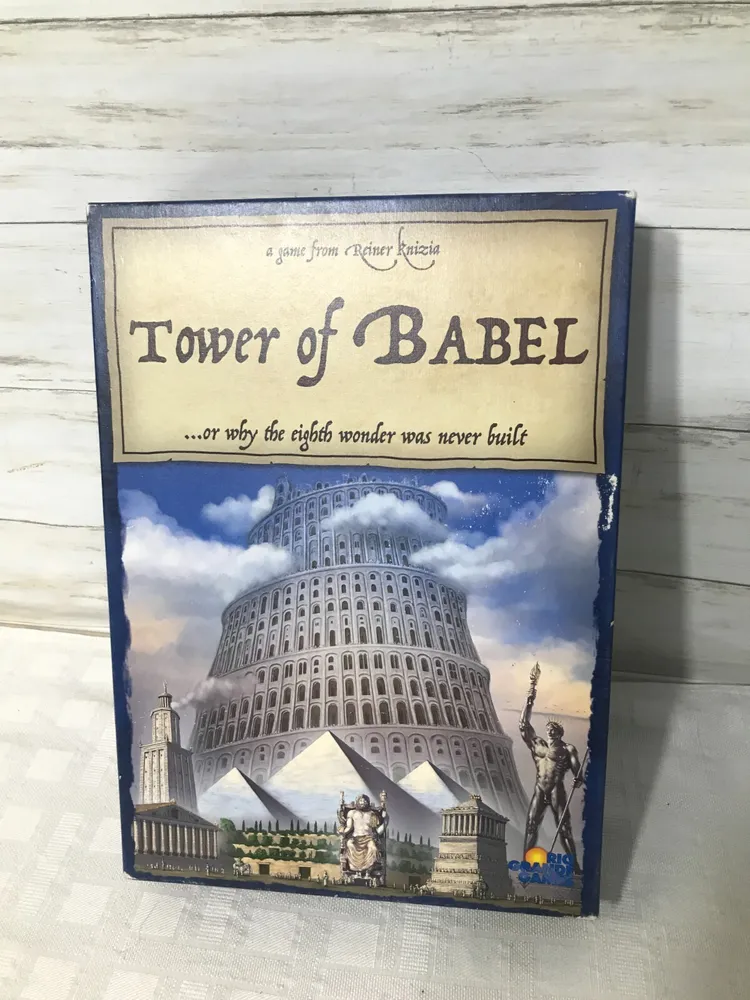Tower of Babel
Tower of Babel
Tower of Babel is a board game where players use cards to try to build the eight wonders of the ancient world. The number they build varies, but can’t be more than seven. The game was designed by Reiner Knizia and published by Hans im Glück in 2005. The game is named after the biblical story of the Tower of Babel, which appears in Genesis 11:1–9. The story is an attempt to explain the existence of diverse human languages.
Why is Tower of Babel Popular?
Tower of Babel is a popular game because it is easy to learn, but has a lot of depth and strategy. The game has won several awards, including the 2005 Spiel des Jahres award. The game is significant because it is a good example of a modern board game that combines luck and strategy in a unique way.
Game Components of Tower of Babel
How To Setup Tower of Babel
To set up the game, players start by placing the game board in the middle of the playing area. Each player chooses a set of tokens and pieces in their color. The wonder cards are shuffled and placed face down on designated spaces on the board. The scoreboard is also set up to track players’ points.
Gameplay Mechanics and Game Objective
Player Experience
In Tower of Babel, players engage in a mix of strategic planning and social interaction. The game requires careful consideration of when to accept or refuse help, as these decisions can significantly impact the final scoring. Players must balance their own progress with the potential benefits of allowing others to contribute.
Pros
Cons
Personal Thoughts on Tower of Babel
Tower of Babel is ideal for experienced board game enthusiasts who enjoy strategic planning and social negotiation. It is particularly suited for players who appreciate games with a strong historical or thematic backdrop. While it may not be the best fit for new or casual players due to its complexity, it offers a rewarding experience for those who enjoy deep strategy and tactical decision-making.
We are supported by our audience. When you purchase through links on our site, we may earn an affiliate commission, at no extra cost for you. Learn more.

